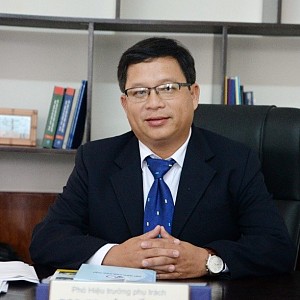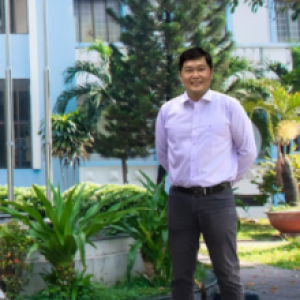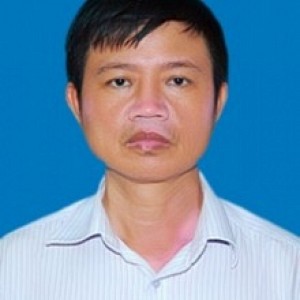Search Papers
5 papers
FACTORS AFFECTING THE SATISFACTION OF STUDENTS, LECTURERS FROM THE FACULTY OF TECHNOLOGY AND SUSTAINABLE DEVELOPMENT WITH THE LABORATORY AT THU DAU MOT UNIVERSITY
Manh Tran Dinh, Thi Bich Thao Nguyen, Minh Thuan Nguyen, Thanh Nha Tran
The laboratory can be seen as an environment where students can enhance their skills by transferring theoretical knowledge into practice. The purpose of this study is to evaluate the factors affecting the satisfaction of students and lecturers majoring in Chemistry, Biotechnology, and Food Technology from the Faculty of Technology and Sustainable Development at Thu Dau Mot University. A total of 300 students from freshman to seniors and their lecturer were surveyed using a questionnaire comprising 25 observed variables. The obtained information were subsequently analyzed using Exploratory Factor Analysis (EFA) and linear regression modeling. The results indicated that the proposed model consists of four independent factors (laboratory facilities, service competence, responsiveness, and school support) and one dependent factor (satisfaction), which demonstrated reliability with Cronbach’s Alpha coefficients greater than 0.6 and total variable correlation coefficients above 0.3. The EFA results of 19 accepted observed variables showed correlations among them, with a KMO value of 0.931, a Bartlett’s test significance of 0.000, and a total extracted variance of 70.435%. These 19 observed variables were grouped into four independent factors that correlated with the dependent factor (satisfaction with four observed variables), with sig = 0.000. The linear regression analysis confirmed the appropriateness of the model regarding the observed variables, with no signs of autocorrelation or multicollinearity. The factors influencing the satisfaction of student and lecturer with the laboratory were ranked, in order of importance, as follows: school support (β = 0.683), responsiveness (β = 0.130), and facilities (β = 0.129). All standardized residuals of the observed variables lay on a straight line, indicating that they followed a normal distribution.
EOSINOPHILIC GASTROENTERITIS – A CASE REPORT OF 15 A YEAR-OLD BOY
Le Thi Thuy Dung, Nguyen Thi Thanh Thao, Le Thi Van Anh
Eosinophilic gastroenteritis (EGE) is a rare condition characterized by eosinophilic infiltration into the gastrointestinal tract. Symptoms are often non-specific and gastrointestinal in nature, such as nausea, vomiting, abdominal pain, diarrhea, weight loss, and malabsorption. Diagnosis is primarily based on clinical findings, laboratory tests, imaging, and histopathological examination through endoscopic biopsy. Treatment involves corticosteroids, proton pump inhibitors (PPIs), and dietary modifications. This article presents the case of a 15-year-old male diagnosed with eosinophilic gastroenteritis with a history of cow’s milk allergy. The patient was treated with systematic corticosteroids (1mg/kg/24h), PPIs (esomeprazole 40mg/day) and elimination dietary therapy (peptide-based formula), resulting in positive clinical outcome. Through this case, we emphasize the importance of early diagnosis and appropriate management in handling this rare disorder.
THE EFFECT OF IMMOBILIZED YEAST CELLS IN CA-ALGINATE ON ETHANOL FERMENTATION OF DRAGON FRUIT (HYLOCEREUS COSTARICENSIS)
Nguyen Bang Phi, Nguyen Cam Le
Dragon fruit-based wine is a value-added product that enhances the value of domestic agricultural products, especially for those facing challenges in raw form export. In this study, Saccharomyces cerevisiae yeast cells were immobilized using the Ca-alginate carrier for assessing the influence of Na-alginate and CaCl2 concentrations on the quality of immobilized Ca-alginate beads during wine fermentation. A repeated fermentation study was conducted to determine the efficiency and stability of immobilized beads in dragon fruit-based wine fermentation. The results indicated that the immobilized Ca-alginate beads exhibited good fermentation efficiency with 3% Na-alginate and 2% CaCl2 concentrations. Moreover, the fermentation efficiency was maintained through at least four fermentation cycles. The immobilized yeast cells contributed to the production of wine with favorable qualities in terms of color and taste, meeting the standards in laboratory-scale TCVN 3215-79. These findings underscore the potential of cell immobilization technology using Ca-alginate carriers in the fermentation process of dragon fruit- based wine. This technology significantly enhances the value and diversifies the range of Vietnamese agricultural products, mainly dragon fruit
LACONICALLY REVIEWED CONCEPTS PERTAINING THE ROTAVIRUS: A SEVERE DIARRHEA CAUSING MICROBE
Salisu Garba, Malami Dikko, Barga Isiyaka Bala, Zayyanu Malami, Yusuf Sarkingobir
Nigeria and developing countries are suffering from infectious diseases due to a mixture of determinants. Parable, rotavirus is a major concern that causes a lot of deaths and hospitalization among children under five of age. Therefore, it is imperative to have more understanding of the rotavirus. A literature review to form concepts were made under the following headings: Historical background of the Rotaviruses, General Characteristics of Rotaviruses, Classification of Rotaviruses, Structure of Rotavirus particle, Rotavirus protein, Non- structural proteins, Structure of Rotavirus genome, Genetic reassortment of Rotaviruses, Mechanisms of Rotavirus genetic diversity, Rotavirus infection, Rotavirus replication, Transmission of Rotaviruses, Incubation period of Rotaviruses, Pathogenesis of Rotavirus infection, Signs and symptoms of Rotavirus infection, Immunity to Rotaviruses, Laboratory diagnosis of Rotaviruses, Epidemiology of Rotaviruses, Treatment of rotavirus infection, Antiviral therapy, Other Therapies, Management of Rotavirus infection, Prevention of Rotavirus infections, General Preventive Measures, Hospital Infection Control Measures. This information would invariably help in gaining understanding the basics of Rotavirus that causes diarrhea in children.
Removal of copper (Cu2+) ions from aqueous solutions by adsorption on activated macadamia carbon using H3PO4 activating agent
Đào Minh Trung, Dang Thi Hoai Thu, Nguyen Thi Thanh Tram
The study aims to investigate the possibility of processing copper metal (Cu2+) with activated carbon prepared from macadamia shell. Activated carbon is prepared from Macadamia shell by chemical agent H3PO4 with coke ratio: H3PO4 = 1:1, optimal temperature condition is 5000C and burning time is 60 minutes. Using the assumed Cu2+ metal treats materials in the laboratory with a concentration of 30ppm. The research to result ability material adsorbed Cu2+ metal achieve good performance 95.92% handle, corresponding to the concentration of Cu2+ reduced from 30 mg/l to 1.2mg/l in optimal conditions is pH = 4.5 , dosage 1.8g/l, time 30 minutes. The results showed that activated carbon prepared from macadamia husk with chemical agent H3PO4 was capable of treating copper metal in wastewater.
Publication Information
Publisher
Thu Dau Mot University, Viet Nam
Editor-in-Chief

Assoc. Prof. Nguyen Van Hiep
Thu Dau Mot University
Thu Dau Mot University
Editorial Board

Assoc. Prof. Le Tuan Anh
Thu Dau Mot University
Thu Dau Mot University

PhD. Nguyen Quoc Cuong
Thu Dau Mot University
Thu Dau Mot University

PhD. Doan Ngoc Xuan
Thu Dau Mot University
Thu Dau Mot University

PhD. Nguyen Khoa Truong An
Thu Dau Mot University
Thu Dau Mot University

Assoc. Prof. Nguyen Thanh Binh
Thu Dau Mot University
Thu Dau Mot University

PhD. Le Thi Thuy Dung
Thu Dau Mot University
Thu Dau Mot University

PhD. Ngo Hong Diep
Thu Dau Mot University
Thu Dau Mot University

PhD. Nguyen Duc Dat Duc
Ho Chi Minh City University of Industry and Trade
Ho Chi Minh City University of Industry and Trade

Assoc. Prof. Nguyen Van Duc
Animal Husbandry Association of Vietnam
Animal Husbandry Association of Vietnam

PhD. Nguyen Thi Nhat Hang
Department of Education and Training of Binh Duong Province
Department of Education and Training of Binh Duong Province

PhD. Nguyen Thi Cam Le
Vietnam Aviation Academy
Vietnam Aviation Academy

PhD. Trần Hạnh Minh Phương
Thu Dau Mot University
Thu Dau Mot University

M.A. Pham Van Thinh
Thu Dau Mot University
Thu Dau Mot University

PhD. Nguyen Thi Lien Thuong
Thu Dau Mot University
Thu Dau Mot University

Prof. Le Quang Tri
Can Tho University
Can Tho University

Prof. Banh Quoc Tuan
Thu Dau Mot University
Thu Dau Mot University

